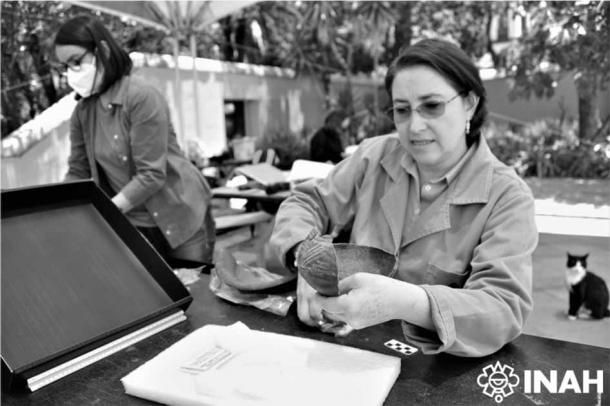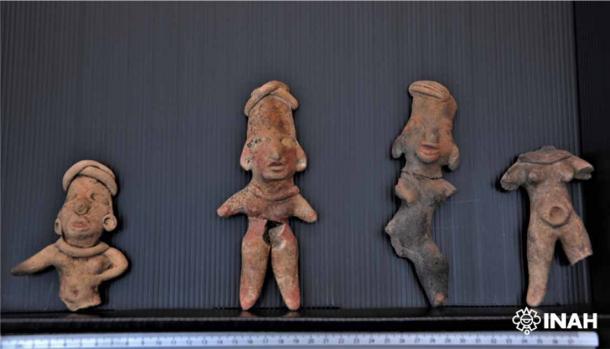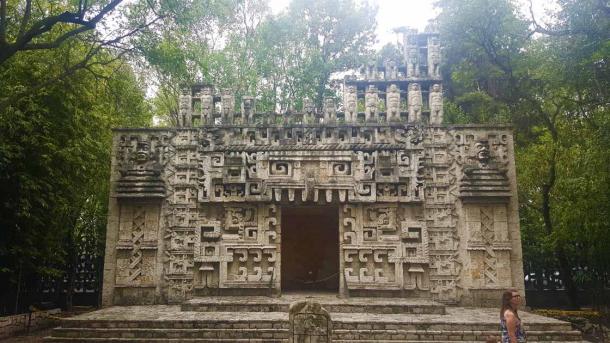
Oldest Artifacts In Mexican Basin Were Walked Over Daily at Chapultepec
Archaeologists in Mexico have discovered a layer of tools, utensils, and otherworldly figures in an ancient ceramic layer. For more than three thousand years, the artifacts remained undisturbed under the surface of the forest, even though hundreds of thousands of people passed over the fragmented ceramic vessels and human figurines every day. Now, the site is revealed to be among the oldest in the Basin of Mexico.
The Bosque de Chapultepec (Chapultepec Forest) in Mexico City is one of the oldest urban forests in Latin America, with several ancient sites dated to the Middle Pre-Classical period (1200-600 BC). The forest is managed by the National Institute of Anthropology and History (INAH), which recently announced that researchers from the Archaeological Salvage Center for Environmental Culture have made a “3,000 year old discovery”.
- The Lost City of Aztlan – Legendary Homeland of the Aztecs
- A Unique Mesoamerican City: How the Urban Design Teotihuacan was Lost and Found

Bosque de Chapultepec at sunset (zsuriel / Adobe Stock)
Smashed, Fragmented, But No Less Revelatory
Archaeologists discovered the layer of smashed ceramic fragments less than a meter (3.28 feet) under the ground, in the vicinity of the Xochipilli Fountain and Composers Avenue in Chapultepec Forest.
The ancient remains include shattered and deliberately burned clay vessels and abstract human figurines. The researcher said that, so far, the dig has been “transcendental in its content.” Furthermore, the recovered items have “doubled the temporality of human settlement in this area, raising it to more than three millennia.”

A rich layer of purposefully broken ceramic items, discovered in Chapultepec Forest, will be a treasure trove of information on the Pre-Classical period (Mauricio Marat, courtesy INAH)
Site of Perpetual Population
Professor María de Lourdes López Camacho was the project leader. She said the archaeological layer was identified only 700 meters (2,296.59 feet) from the Zacatenco site. Discovered in 2018, this pre-classical village site is located at the foot of the homonymous hill, and it thrived at the height of Teotihuacan between 225 and 550 AD.
The team of researchers initially dug a 2 x 2 meter (6.56 foot) square test trench in a thinly forested area. Dr. Camacho said the recovered artifacts were all found within a 38 x 24 meter (124.67 x 78.74 foot) area. The archaeologists first identified a “ceramic floor” composed of clay fragments that had been “intentionally broken and exposed to fire”, wrote López Camacho. The researcher added that it was “surprising” to consider how many generations must have passed through here [the park] over the last three thousand years.
- Biggest Aztec Starfish Altar Ever, Found in Templo Mayor, Mexico City!
- Investigations Reveal Secrets of Hidden Tunnels Beneath Colonial City in Mexico

Professor Camacho examining one of the recent finds from Chapultepec (Mauricio Marat, courtesy of INAH)
Plump and Dwarf-Legged People of Chapultepec
Among the discoveries were sharp flint tools, arrowheads, spinning whorls, and a deer antler punch, which all demonstrated signs of heavy wear. This means they were functional rather than ritualistic tools. Hundreds of smashed plates were reassembled, and analysis revealed zoomorphic and anthropomorphic figures and faces. One of the more commonly depicted forms, according to Dr. Camacho, were “plump legged females and dwarf legs.”

Deliberately broken and burned human figurines, with plump bodies and short legs, raise new questions about the pre-classical culture (Mauricio Marat, courtesy INAH)
Dr. Camacho says the region is “non-floodable,” and water is supplied by rivers from the Sierra de Las Cruces. These two qualities means the area forms “an ecosystem conducive to the development of pre-urban nuclei.” The new discoveries mean Chapultepec was among the earliest inhabited locations in the Basin of Mexico. Professor Camacho believes these discoveries will “open new routes to studies on the Formative period.”

Recent findings predate other structures in Chapultepec Forest from the Early Formative period (Yesid Ferney Patino / CC BY 3.0)
Around 5300 BC, in what is today Mexico, people started successfully harvesting corn (maize), and by 1500 BC, families had begun farming around sustainable villages, and living in them. This is when agriculture boomed, seeing the cultivation of squashes, beans, peppers, and cotton, a time known to archaeologists as the Early Formative period (1500–900 BC). It was at this time, when new agri-deities were being worshipped, that the temple-pyramid became a central architectural feature.
Top image: Statuettes recovered from the Chapultepec Forest site, Mexico City. Source: Mauricio Marat / INAH
By Ashley Cowie
References
Descubrimiento inscribe al Bosque de Chapultepec entre los sitios más antiguos de la Cuenca de México. August 17, 2022. Instituto Nacional de Antropología e Historia. Available at: https://www.inah.gob.mx/boletines/descubrimiento-inscribe-al-bosque-de-chapultepec-entre-los-sitios-mas-antiguos-de-la-cuenca-de-mexico
















Comments
“deliberately burned clay vessels"
Okay, I’ll take the bait. How was it determined ‘deliberate’?
Nobody gets paid to tell the truth.